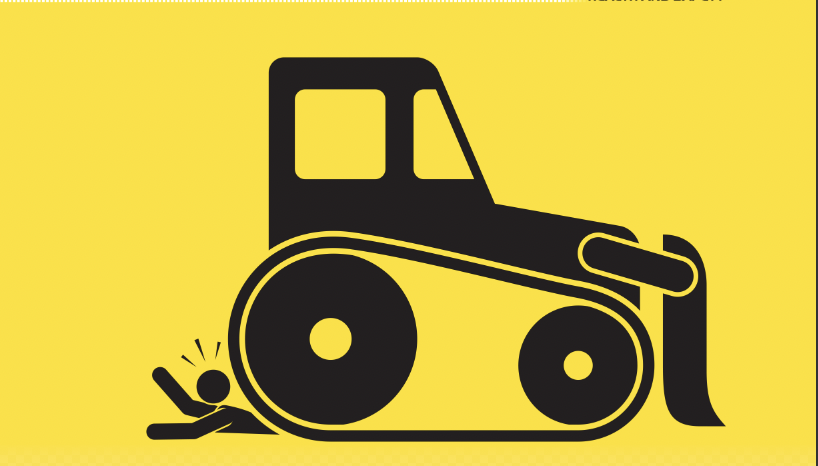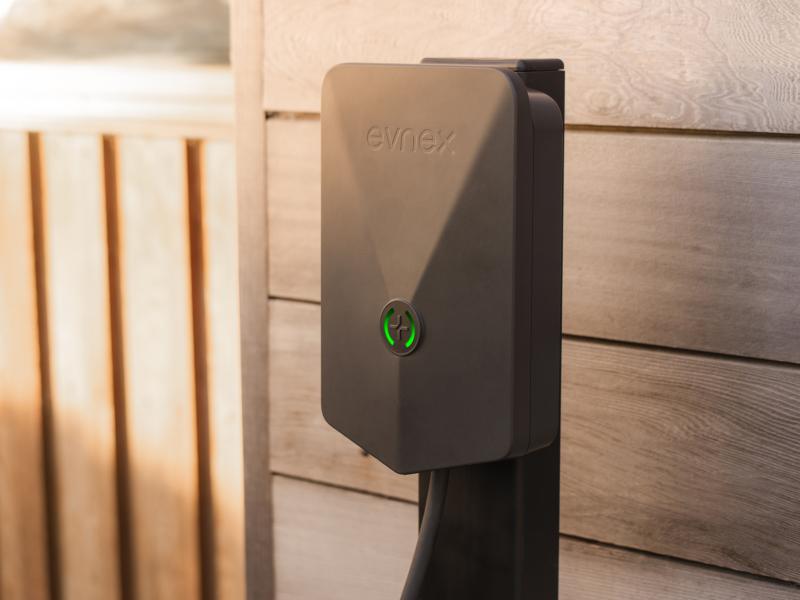Three words which every Fleet Manager should be very, very concerned with. If your organisation has a Health and Safety officer, thank your lucky stars. If not, buckle up – you’re in for a busy time.
At one point in the not-so-dim-and-distant past, a fleet manager’s role encompassed a certain amount of health and safety responsibility, which may or may not have grown with the implementation of the Health and Safety Act of 2015.
Some larger organisations may – at that point – have established a dedicated H&S officer, but we suspect most SMEs would have delegated the role to… yep; the fleet manager.
This makes sense as the two roles are inextricably linked and employing two people to do an interlinked job really doesn’t make sense financially.
But in fairness to the bright eyed and bushy tailed fleet manager with enough on their plate thank you, H&S adds a huge amount of responsibility – and the more you study it, the worse it seems to get; especially if you are doing everything you should be doing to carry out both roles properly.
On reflection, it’s better to keep fleet manager and H&S roles separate if justice is to be done to either, but both individual roles need to be able to contribute and sing from the same songbook, which is why there are these hybrid creatures: the rare and endangered Fleet Health and Safety managers.
The H&S component of the job is in italics to ensure there is no confusion: the role is NOT to look after the health of the fleet. Rather it is to manage the fleet and the Health and Safety of the fleet operators.
But I digress, whether the fleet manager and Health and Safety person(s) are separate entities or an extremely busy and overambitious one, management needs to understand, acknowledge and appreciate what an FM/H&S officer must do to function effectively and ensure the organisation he/she represents is compliant with health and safety requirements as set out by the H&S Act.
And that Act does change. Well, it had to, given that we are now living in a Covidian world.
Where then, to begin? Well, for some companies and organisations, this could well be the start of a major overhaul in day-to-day operations and as we know, change is hard.
You will find though, that a little effective laying down of groundwork is going to pay off in terms of long-term business success. If you haven’t had operational ‘basics’ put into place as yet, now is the best time to start.
If you have fleet/H&S procedures in place, good for you, but given the state of the world we live in, it’s probably a good time to revisit those procedures and that starts with paperwork:
COMPANY POLICY
The diligent FM should by now, already have been looking to revise company policies, especially as they pertain to off- site work practices. If no company policies exist (and that’s actually a bad thing for a long-standing company) now’s a really good time to draw them up and cement them in place.
Referred to as ‘living documents’ in corporate-speak, company policies provide direction, ensure organisational cohesiveness, and protect both the organisation and its individuals, yet they are so often overlooked at the expense of doing the business of staying in business.
This is partly the reason top level management should oversee – but delegate – company policy creation and maintenance.
CEO’s: Don’t try to micro-manage, as this will have a detrimental effect on morale and productivity, which is exactly what effective company policies are trying to preserve.
Your FM should be a – if not the – key policy designer with managerial oversight, but at the same time, be given the authority to draw up and implement approved company policies if for nothing else than the effectiveness and preservation of your company fleet, which today – more than ever – entails more than a few Health and Safety considerations.
In many cases – policy changes may come quickly in response to social pressures, such as Lockdowns for example. Indeed, there were many businesses which had to adapt quickly in the face of Covid lockdown requirements and there were some who found this to be a huge challenge.
Other organisations had enough built-in agility to operate in the toughest Covid environments with minimal disruption and that agility came about through effective procedures determined by smart policy.
However, those which have thus far come through the crisis, any ‘kneejerk’ policy changes need revision and tidying. Management; if your fleet manager is insisting on doing this right now, he/she is doing just what you are paying them for.
WHAT TO COVER
A comprehensive company vehicle policy can be up to 25 pages long, and include, but not be limited to, overall driver acknowledgement, personal use policy acceptance, driver’s vehicle inspection sheets, what to do at accident sites and driver evaluation and intervention reports.
The bulk of the policy should include: prohibited actions in relation to company vehicles, use of cellular phones, seatbelts, drugs and alcohol, the definition of personal use of company, or private vehicles used on company business, inspection, maintenance and garaging, defensive driving, orientation, training and assessment protocols, application of reward/disciplinary actions as well as clarification of telematics (why and how they are used).
There are plenty of examples on how to produce effective company policies on-line, so FMs, don’t panic, Dr Google is your friend.
We found an excellent example of a Company Fleet policy at: https://www.zurichna.com//media/project/zwp/zna/docs/kh/prog/zurich_fleet_policy_sample.pdf which is perhaps a little OTT in the appendices and needs modifying from its US-speak, but it’s very comprehensive and a great place to start.
We are aware of a prominent New Zealand fleet which has recently added PHEVs to its vehicle list and there was a question raised about how to ensure the vehicles are charged between one shift and the next.
To be fair, shifts for this fleet are often long and gruelling and there had been issues in the past with ICE vehicles being left empty or near empty – a situation many company drivers will likely be familiar with – which promotes resentment on the part of other fleet users.
The answer is simple: put it into policy – ie: At the completion of shift, the PHEV vehicle must be charged and signed by the individual to this effect.
A simple and effective solution since all vehicle users should have previously been made aware of – and signed off on – the company vehicle policy and any changes made to it at the time those changes were made.
IT’S NOT JUST ABOUT THE FLEET
COVID has changed businesses in very major ways. We’ve all heard this before, along with the statement ‘things are never going to be what they once were’ which is very true. But things can be made better through change.
Let’s look for the moment, at the topic of employees working from home – a Health and Safety Act 2015 nightmare, but a necessary evil thanks to Covid-19.
Worksafe New Zealand is the regulator for the Health and Safety Act 2015. As such, WNZ recommends the following for businesses and services who have employees working from home, with a strong emphasis on unbiased communication, which should be recognised by both parties. It is not an opportunity for employees to ‘milk the system’ but nor are your employee’s suggestions things to be summarily dismissed:
- Ensure workers’ views are asked for and considered when deciding if working from home is appropriat.
- Discuss any risks which may arise from working from home and how these can be eliminated or else minimised.
- Have clear, effective, and ongoing ways for workers to suggest improvements or raise concern.
- Continue to ensure risks to workers’ health and safety are managed effectively.
In addition, Worksafe New Zealand suggests managers/employers consider the following for ease of transition between office and home workplace situations:
THINK about the things that could harm a team member while working at home
Worksafe suggests a number of considerations but cites most prominently the setting up of safe workplace, positioning of computerised equipment, appropriate furniture, effective and adequate lighting and so forth. Is there access to fire extinguishers, are multi-boards equipped with residual current devices and what about First Aid kits? Whatever your office environment provided, do your ‘at home’ employees have access to the same?
Working from home is easier for some than it is for others. There are those who will thrive in an at home environment as a place of work, but there are others who will find the change in social interaction an upsetting consideration. Mitigating this through frequent telecommunication (phone, Zoom, Teams) can help.
Lastly, and probably the most challenging consideration is the consideration of self-isolation in the event of someone in the household testing positive for a Covid condition. Can your employee still work effectively?
TALK to your team members about these things and get their view
As alluded to earlier, the whole idea of working from home can and should foster open communication between employer and employee and this may need to go through a third party in the form of the H&S representative. By allowing your team members to help identify things which may cause harm, your H&S person can help assess the level of risk around this. For example, some of your team may have care responsibilities at home to manage while working and may need to discuss a flexible work arrangement.
WORK TOGETHER to manage
Many people’s homes are not ideally set up as places of work and as such, while organisations have had to respond quickly to Covid-related crises, adapting a home environment may take time.
Work together to identify the best way to manage these in this situation. It may be possible to set up the dining table with a secure makeshift stand to raise height for example.
CHECK IN to see how things are going...
Once you’ve worked together to identify the things that could harm them while working from home and put in place things to manage these, check in regularly to see how these are going. You may want to schedule in a regular catchup to discuss any issues with things like their desk set-up or how they’re feeling being away from the team. Ensure team members know how to report any incidents or concerns.
TAKE ACTION if there is an issue or a team member raises concerns
If your team member is having problems or raises a concern, work with them to identify a way to address this. For example, if they are getting back pain from working at their dining table, can they alternate between sitting and standing at the kitchen bench? Or could they take regular exercise/ stretch breaks every 30 minutes?
As you will all be aware, the H&S Act 2015 states that a vehicle owned by the company/organisation is an extension of the workplace.
Given the number of employers doing the right thing in terms of Red Light / Covid compliance ie, sending employees home to work – sometimes on a permanent basis – some of those employees would have company cars which are now not housed in a centralised parking environment.
Instead, some of those company vehicles will be residing at private addresses. Some will have been sold back to their lease companies or disposed of through other channels in favour of employees using their own private vehicles – again, something which needs to be addressed in policy – or your organisation may see an increase in shared or short-term rental vehicles – also something your policy should reflect.
But as to the company vehicles which are now scattered and with employees, well, does your company vehicle policy make allowances for this? Or any of the following:
Is the vehicle adequately garaged? What about servicing? Then there is the matter of its legal compliance: WoF, CoF, RUC, registration. Who’s driving the vehicle? Are house pets being transported on holidays? Are staff moonlighting as Uber drivers using company cars? Are vehicles being driven by appropriately licensed drivers? Is damage being adequately reported?
Most critically, who monitors these questions and how? The answer will lie with someone in your organisation – Fleet managers, step back, here comes another role for you if you don’t dodge it – and is something your management team needs to determine.
But we’ll let you work out the fine print, because the H&S role might also need some adjustment just as our businesses themselves have had to adjust – and here’s a couple of examples on that little topic:
A local organisation employing 15 people enjoyed a lease on a business premises for company operations and storage with warehousing big enough for two management vehicles, a pool car and visitor parking. Staff had carparks right outside the building.
A business decision was made to free up some capital by relinquishing the lease and sending the staff to work from home, management, administration and sales force.
To this day, the workforce is working successfully from home and has done so right throughout the Covid lockdowns, employees having become fluent with Zoom and Teams conferencing and being relied upon and trusted by management to work for the betterment of the company.
An active social club, regularly scheduled staff / team meetings and direct interaction between various departments as workloads determine as well as an open phone /email to the director are ensuring the ongoing success and good mental wellbeing of employees.
A vehicle importer group has a large central premises supporting management, a wholesale sales force, technical training personnel, and workshop staff – approximately 80 to 120 employees.
In response to Government guidelines, the five marques’ representative general managers discussed and agreed to the actions that would be taken.
This involved people working from home in compliance with lockdown requirements and later returning to the office once lockdown was lifted. Of course, one lockdown followed another, and employees were once again, sent home to work.
Today, under the traffic light system, a roster has been put in place which limits the employee numbers for each brand to between six or eight in the office at one time, and all complying with QR scanning, mask wearing, two metre social distancing and general hygiene requirements.
Employees have been able to select the days and times they are to be in the office while they are also accessible at their homes outside of the nominated times.
The intent of this article is to bring all these points to the forefront of management thinking and to suggest management re-evaluate the role of the Fleet manager – basically readjust protocols which have been around since sales reps first took to the road using motorised transport.
It really is a quantum shift in thinking, which should give rise to the thought that the Fleet manager needs to be someone other than the receptionist or the office car enthusiast who knows the difference between a petrol and a diesel-powered vehicle.






